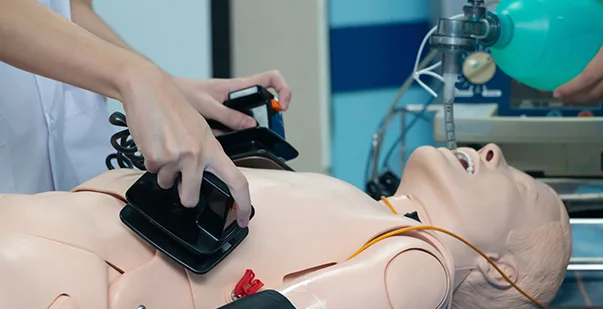What is Angina? Angina is basically the most common symptom of coronary artery disease. It is characterized by chest pain and a sense of discomfort due to reduced blood flow to the heart muscle. So, It is important to understand angina in order to recognize its symptoms in the first place, identify its causes, and explore different treatment options.
Angina typically presents as chest pressure, tightness, or pain that may radiate to the arms, neck, jaw, or back. It is often triggered by physical exertion or emotional stress. By learning about it and how it manifests, individuals can take proactive steps to manage the condition and improve their quality of life.
- Understanding Angina: Definition and Types
Angina can manifest as chest pain or discomfort due to inadequate blood flow to the heart muscle. So, let’s define angina and see how crucial it is to properly diagnose and manage this condition.- Definition of Angina:
Angina is a symptom rather than a disease itself, indicating an underlying issue with the heart’s blood supply. It is typically described as chest pressure, tightness, or pain that may radiate to the arms, neck, jaw, or back. This uneasiness is caused by the heart not receiving enough oxygen-rich blood, usually due to narrowed or blocked arteries. - Types of Angina:
There are several types of angina, including stable angina, unstable angina, variant (Prinzmetal’s) angina, and microvascular angina. Each type has distinct characteristics and triggers, ranging from predictable chest pain during physical exertion (stable angina) to unexpected chest pain at rest (unstable angina). - Differentiating Factors and Diagnosis:
The need to know the differences between the different types of angina is the reason for the accurate diagnosis and the relevant treatment. Diagnostic tests such as electrocardiograms (ECGs), stress tests, angiograms, and cardiac imaging assist medical providers in identifying the kind of angina a patient is having. Correct diagnostics give a reason to create an individual treatment plan, that corresponds to the patient’s needs and condition.
Prompt recognition of the signs and symptoms of angina and quick initiation of appropriate first aid measures can help alleviate the chest pain and prevent a potential progression to a more serious cardiac event that may require CPR.
Read more: What is Angina: Symptoms, Causes & Treatment
- Definition of Angina:
- Symptoms of Angina: Recognizing the Warning Signs
Recognizing the symptoms of unstable angina is crucial for early detection and prompt management of this condition. Understanding the warning signs can help individuals seek timely medical attention and prevent serious complications related to heart health.- Typical Symptoms of Angina:
The most common symptom of angina is heaviness in chest discomfort, often described as pressure, squeezing, heaviness, or tightness in the chest. This pain may also radiate to the arms, shoulders, neck, jaw, or back. Recognizing these typical symptoms is essential for identifying a potential angina episode and seeking medical evaluation. - Atypical Symptoms and Variations:
In some cases, angina may present with atypical symptoms that differ from classic chest pain. These variations can include shortness of breath, nausea, fatigue, dizziness, or even indigestion. Understanding that angina can manifest in diverse ways is important for recognizing the condition in individuals who may not experience typical chest pain. - Triggers and Patterns:
Angina symptoms can be triggered by various factors, such as physical exertion, emotional stress, exposure to cold temperatures, or heavy meals. Recognizing specific triggers and patterns associated with angina episodes can help individuals modify their lifestyle choices and manage their condition effectively. Monitoring symptoms and identifying consistent patterns can guide healthcare providers in adjusting treatment plans to improve symptom control and quality of life.
If someone with angina experiences a sudden cardiac arrest, CPR should be administered immediately while waiting for emergency medical services to arrive.
Read more: What is Angina: Symptoms, Causes & Treatment
- Typical Symptoms of Angina:
- Causes of Angina: Uncovering the Underlying Factors
Angina leads to reduced blood flow to the heart muscle, leading to angina chest pain or discomfort. Uncovering the underlying factors that contribute to this ischemic condition is essential for the effective management and prevention of angina episodes.- Coronary Artery Disease (CAD):
The primary cause of angina is often coronary artery disease (CAD), a condition characterized by the narrowing or blockage of the coronary arteries that supply blood to the heart. The buildup of plaques composed of cholesterol and other substances can restrict blood flow, leading to ischemia and angina symptoms. - Risk Factors for Angina:
Several risk factors can contribute to the development of angina and coronary artery disease, including hypertension, high cholesterol levels, diabetes, smoking, obesity, lack of physical activity, and a family history of heart disease. Understanding these risk factors is crucial for identifying individuals who may be at higher risk for angina and implementing preventive strategies. - Other Contributing Factors:
- In addition to CAD and traditional risk factors, other conditions and factors can also contribute to angina development. These may include conditions like arterial spasms, inflammation of the coronary arteries, heart valve disorders, or conditions that increase the heart’s oxygen demand. These additional contributing factors can help healthcare providers tailor treatment plans to address what causes angina in individual patients.
- Coronary Artery Disease (CAD):
- Treatment Options for Angina: Managing and Preventing Symptoms
Effective management of angina is essential for improving quality of life and reducing the risk of complications associated with coronary artery disease. Understanding the treatment options available for angina can help individuals alleviate symptoms and prevent angina episodes.- Lifestyle Modifications:
Lifestyle changes play a crucial role in managing angina and reducing the risk of heart-related complications. These modifications may include adopting a heart-healthy diet low in saturated fats and cholesterol, engaging in regular physical activity, maintaining a healthy weight, quitting smoking, and managing stress. Lifestyle modifications can help improve cardiovascular health, reduce angina symptoms, and prevent disease progression. - Medications for Angina:
Various medications are prescribed to manage angina symptoms and improve blood flow to the heart. Common medications include nitroglycerin to relieve chest pain during episodes, beta-blockers to reduce heart rate and blood pressure, calcium channel blockers to relax blood vessels, and antiplatelet medications to prevent blood clots. Understanding the role of each medication and following a prescribed regimen is essential for effective angina management. - Invasive Procedures and Surgical Interventions:
In cases where lifestyle changes and medications are inadequate in controlling angina symptoms, invasive procedures or surgical interventions may be recommended. These procedures may include angioplasty and stenting to widen narrowed or blocked arteries, coronary artery bypass grafting (CABG) to bypass obstructed arteries, or enhanced external counterpulsation (EECP) therapy to improve blood flow to the heart. Understanding the risks and benefits of these interventions is crucial for individuals considering these treatment options for angina management.
- Lifestyle Modifications:
In some cases, when severe angina attacks can lead to a heart attack or cardiac arrest, where CPR or first aid may be necessary to help maintain blood flow and oxygenation while waiting for emergency medical assistance.
Read more: What is Angina: Symptoms, Causes & Treatment
Conclusion
In conclusion, understanding what is angina and how it manifests as chest pain or discomfort resulting from reduced blood flow to the heart—is imperative for effective management. Recognizing its symptoms, such as chest pressure and radiating pain, prompts timely medical attention. Uncovering its causes, primarily coronary artery disease and associated risk factors informs preventive strategies. Treatment options, from lifestyle changes to invasive procedures, offer avenues for symptom relief and disease management. By comprehensively addressing angina, individuals can optimize their heart health and enhance their quality of life.










